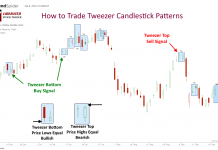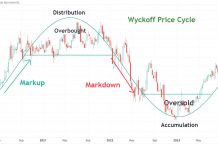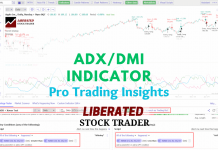Stock analyst ratings provide investors with guidance about a company’s future growth and profitability. Unfortunately, our data shows that analyst ratings are 95% inaccurate and are heavily “Buy” or “Strong Buy” biased.
Get ready to dive in and discover the insider secrets, jargon, and euphemisms of analyst ratings.
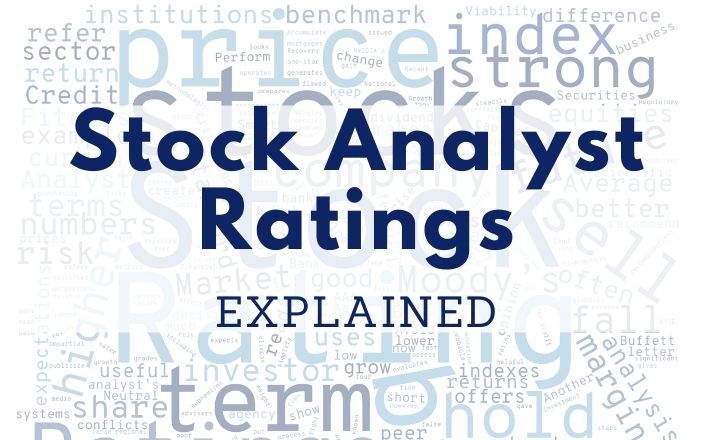
What are Stock Analyst Ratings?
A stock analyst rating is an opinion assigned to a publicly traded company’s stock, which indicates a financial analyst’s expectation of a future increase or decrease in a stock’s price. Typically, a rating indicates Buy, Sell, Overweight, Underweight, Hold, or other derivatives of the meaning.
Prepared by a financial analyst, stock ratings are usually derived from a systematic analysis of the various factors that impact a company’s business, such as revenue, sales, competition, barriers to new market entrants, and profitability.
Analysts’ ratings aim to communicate a research company’s opinion on a particular stock; investors and fund managers then use this advice to inform their investing decisions.
To create a rating, an analyst evaluates a stock and prepares a short description emphasizing certain aspects of the issue.
What is a Stock Analyst?
A stock analyst, or a financial or technical analyst, analyzes securities and equities to determine their suitability for an investment portfolio. A significant aspect of the analyst’s role involves providing expert opinions and recommendations regarding individual equities.
Analysts’ ratings attempt to make financial analysis easy to access, read, and use. Unfortunately, analyst ratings are often confusing because they contain jargon, acronyms, and technical terms.
Even though they are popular, analysts’ ratings are just opinions. Smart investors use analysts’ ratings as a reference and read several ratings before making any investment decision.
18 Stock Analyst Ratings Explained
The most confusing aspect of stock analyst ratings is the terminology. Many people ignore ratings because they cannot understand the terms. The first step to using the ratings is understanding the terms the analysts use. To help you better understand stock analysts’ ratings, we will decipher some of the terms they use. The confusing way rating agencies use their jargon has caused some to say it causes a fear of missing out.
1. Buy Rating
A Buy rating is an analyst’s recommendation to buy a stock. Analysts will issue a buy rating when a stock displays certain criteria. For instance, value analysts recommend a stock if it falls to a certain price. Growth analysts will issue a buy rating if a stock’s share price doubles and looks to rise higher.
Some analysts will use euphemisms such as “strong-buy” and “on the recommended list” instead of the term buy rating. The financial media will publicize buy ratings from well-known analysts or major financial institutions.
2. Overweight
Overweight usually means an analyst believes a stock is underpriced compared to a benchmark index. This term is confusing because overweight means the analyst thinks the stock deserves a higher price.
Analysts usually base overweight ratings on comparison to benchmark indexes such as the S&P 500. The term overweight comes from the practice of trying to determine how much of an index a stock should compose. An analyst could say that Apple (AAPL) is overweight compared to the S&P 500 or the FAANG index.
The analyst hopes that an overweight stock will perform better than expected. Many analysts assume overweight stocks will outperform an index.
You want to be a successful stock investor but don’t know where to start.
Learning stock market investing on your own can be overwhelming. There’s so much information out there, and it’s hard to know what’s true and what’s not.
Liberated Stock Trader Pro Investing Course
Our pro investing classes are the perfect way to learn stock investing. You will learn everything you need to know about financial analysis, charts, stock screening, and portfolio building so you can start building wealth today.
★ 16 Hours of Video Lessons + eBook ★
★ Complete Financial Analysis Lessons ★
★ 6 Proven Investing Strategies ★
★ Professional Grade Stock Chart Analysis Classes ★
3. Underweight
Underweight means an analyst believes a stock is overpriced compared to a benchmark index. This term is confusing because underweight means the analyst thinks the stock deserves a lower price.
Analysts usually base underweight ratings on comparison to benchmark indexes such as the S&P 500 or FAANG index. The term underweight comes from the practice of trying to determine how much of an index a stock should compose. An analyst could say that Microsoft (MSFT) is underweight compared to the S&P 500 or the FAANG index.
4. Equal Weight
A stock that receives an equal weight rating is projected to mirror the benchmark index’s performance. In other words, if the index increases by 1%, the stock should rise by about 1%. If your goal is to replicate a benchmark index within your portfolio, investing in companies with equal weight ratings is advisable.
But the reality is that equal weight means the analyst has no idea about the future performance.
5. Underperform
An underperform” stock rating means that the analyst thinks the stock’s performance will fall below that of the market, index, or sector.
The difference between underperforming and underweight is that underweight usually refers just to share prices. Underperform can refer to price but also to metrics such as income, revenue, dividend, growth, and cash flow.
An underperforming stock rating usually means a stock’s performance does not meet analysts’ expectations. For example, a retailer can underperform if its revenues are below those of close competitors.
Other terms for underperform include weak hold, moderate sell, and underweight. An analyst will put an underweight rating on a stock because they think its performance will fall in the future.
6. Outperform
An Outperform stock rating means an analyst thinks a stock will outperform its peers. An analyst could rate a stock with a return that is 5% higher than the S&P 500 as outperform. Outperform refers to a stock’s price or performance against the competition.
An analyst will give a tech company an outperform rating if she thinks its revenues will grow faster than the rest of the sector.
Euphemisms for outperform include accumulate, overweight, and moderate buy. A good way to think of an outperform rating is that a stock’s performance could improve in the future. Some analysts use the term outperformer to describe these stocks.
7. Neutral
A Neutral rating means an analyst thinks you need to hold the stock. Neutral means the stock will not improve, but it will not decline. A neutral rating means the analyst thinks there will be major no changes to the stock. The analyst thinks the stock’s price will not rise or fall, and the financial numbers will not change.
Analysts usually intend a neutral rating as a recommendation to do nothing with stock or hold it. Analysts sometimes use the term neutral rating as a euphemism for hold.
The term neutral stock rating can also mean an analyst has no opinion about a stock.
8. Hold
A Hold rating means an analyst thinks you should not buy or sell a stock. The analyst thinks the stock is already fairly valued, and any changes to its price will be small. If an analyst gives your stock a hold rating, they think it’s best to wait and see if anything changes before deciding about the stock. A hold recommendation can also mean that the analyst has a neutral opinion on the stock. They don’t think it will significantly increase or decrease in price, and the financial numbers won’t change much either.
9. Sell
A Sell rating means the analyst forecasts a stock price or performance decline. Analysts generally use the term sell when researching and analyzing a company, its market dynamics, industry, sector, or financial performance.
The Sell rating means the analyst thinks investors must sell the stock. A sell rating usually means the analyst suspects the stock price is about to collapse. Some analysts will issue sell ratings for any underweight or under-performing stock.
10. Strong Sell
A strong sell suggests investors should not only sell their existing stock but also avoid buying new positions altogether. This rating is often used when analysts suspect a company’s future growth prospects are poor and the stock price will decrease significantly in the near future.
A Strong Sell stock rating means the analyst thinks the stock price will decline. The difference between a strong sell and a sell is that a strong sell means you need to dump the stock now. Sell means that you need to reevaluate your position in that stock.
Sell and Strong Sell Ratings are rare due to the inherent positive bias of Wall Street’s research analysts. Issuing a Sell or Strong Sell rating usually elicits a harsh reaction from the company in question, potentially cutting off analyst access to covering the company.
11. Strong Buy
A Strong Buy rating usually means the analyst thinks the stock’s returns will grow dramatically. BB&T Capital Markets’ analysts use the term strong buy for stocks they expect to deliver a return of 25% or higher, for example.
The difference between a strong buy and a buy is that the analyst thinks you must consider purchasing a buy stock. A strong is a stock the analyst thinks you must buy now.
12. Long-term Buy
The Long-term Buy rating indicates an analyst thinks the stock will steadily gain value for the foreseeable future. BB&T Capital Markets analysts describe stocks as long-term buys if they think the equities will deliver a 10% to 25% return. Many analysts will issue long-term buy ratings for stocks they expect to deliver steady returns for the foreseeable future.
13. Accumulate
Some analysts will use the term Accumulate to describe a long-term buy. Barrington Research analysts use accumulate to describe stocks they think will outperform the market for over 12 months.
14. Market Perform
Market Perform means an analyst thinks a stock’s performance will match the market’s performance for the near future. Some analysts use the term market performance as a euphemism for underweight or underperforming stocks.
15. Market Underperform
Market Underperform is a term analysts use to describe stocks expected to perform worse than the market. An analyst might issue this rating if they think a stock’s performance will lag behind the S&P 500 for an extended period of time. This is a negative rating overall.
16. Peer Perform
Peer Perform is a rating analysts use to suggest that a stock’s performance will match the average performance of its peers in the same industry. This is seen as a neutral rating, suggesting that the stock won’t outperform or underperform its peers. Analysts might issue this rating if they think a stock’s performance is unlikely to move significantly in either direction
17. Short-Term Avoid
Short-Term Avoid is a rating analysts use to suggest that a stock’s performance will be significantly worse in the short term but may improve over the long term. Analysts might issue this rating if they think a stock should be avoided by investors looking for quick gains but could provide good returns over the long run. This can also be seen as a negative rating, implying that the stock won’t perform well in the short term.
18. Long-term Avoid
Long-term Avoid is a rating analysts use to suggest that a stock’s performance will be significantly worse in the long term despite its potential for short-term gains. Analysts might issue this rating if they think a stock should be avoided by investors looking for long-term returns and could provide only minimal or no gains over the long run. This can also be seen as a warning that the stock may not deliver returns over time and could potentially lose value in the long term. Instead, they recommend investors focus on other stocks with higher potential for growth.
Are Stock Analyst Ratings Accurate?
No, based on our research findings. It appears that analyst ratings exhibit significant inaccuracies and a clear bias toward Buy or Strong Buy recommendations. Particularly when predicting declining stock prices, the reliability of analyst ratings is only at a meager 5%.
The Data Proving the Inaccuracy of Analyst Ratings
Our test data proves stock analyst ratings are 95% incorrect. Of 61 stocks that dropped 10% or more, analyst ratings were 58% buy or strong buy, 95% buy, strong buy or hold, and only 5% were sell or strong sell.
| Analyst Performance | Average |
| Stock 3-Month Return vs. S&P 500 | -14.60% |
| % Strong Buy, Buy or Hold Ratings | 95% |
| % Buy or Strong Buy Ratings | 58% |
| % Sell or Strong Sell Ratings | 5% |
The Analyst Accuracy Test Details
During our three-month analysis to December 2020, we observed that 61 companies listed in the S&P500 index experienced a decline of over 10% in their stock value. Surprisingly, despite these circumstances, an overwhelming 95% of analysts remained optimistic by maintaining either a Strong Buy, Buy, or Hold rating for these stocks. Only 5% of analysts had a Sell or Strong Sell Rating. Additionally, it’s worth noting that 58% of analysts offered a strong buy or buy rating on these particular stocks.
It is easy for investors to fall into the trap of relying on analysts’ ratings rather than their own research. Stock analysts are human beings who are often wrong.
Some analysts are experts at disguising their opinions as technical or scientific analysis. Analysts’ ratings are often inaccurate.
Table: Stock Analyst Rating Inaccuracy – 95%
| Ticker | 3-Month Return vs. S&P 500 | % Strong Buy, Buy or Hold | % Buy or Strong Buy | % Sell or Strong Sell |
| BSX | -25.60% | 100% | 88% | 0% |
| DXCM | -23.40% | 100% | 79% | 0% |
| NLOK | -23.30% | 93% | 43% | 7% |
| VRTX | -23.00% | 100% | 80% | 0% |
| REGN | -22.80% | 100% | 52% | 0% |
| KR | -20.40% | 93% | 33% | 7% |
| BIIB | -19.90% | 83% | 29% | 17% |
| NOC | -19.00% | 100% | 73% | 0% |
| CRM | -18.80% | 96% | 89% | 4% |
| AMT | -18.00% | 100% | 79% | 0% |
| K | -17.90% | 93% | 53% | 7% |
| APD | -17.50% | 100% | 69% | 0% |
| KMB | -17.50% | 89% | 44% | 11% |
| COG | -17.40% | 93% | 57% | 7% |
| KMX | -17.20% | 100% | 91% | 0% |
| HBI | -16.60% | 90% | 50% | 10% |
| AMGN | -16.40% | 95% | 57% | 5% |
| INCY | -16.40% | 100% | 38% | 0% |
| MKC | -16.10% | 57% | 0% | 43% |
| HRL | -15.40% | 75% | 13% | 25% |
| EQIX | -15.10% | 100% | 85% | 0% |
| GILD | -15.00% | 95% | 33% | 5% |
| CHD | -14.90% | 88% | 38% | 13% |
| MAS | -14.60% | 100% | 86% | 0% |
| BWA | -14.50% | 100% | 67% | 0% |
| LUMN | -14.30% | 50% | 7% | 50% |
| DLR | -14.30% | 100% | 55% | 0% |
| IFF | -14.20% | 80% | 60% | 20% |
| NEM | -13.80% | 100% | 58% | 0% |
| SBAC | -13.50% | 100% | 79% | 0% |
| LMT | -13.40% | 100% | 73% | 0% |
| AKAM | -13.40% | 100% | 88% | 0% |
| BAX | -13.40% | 100% | 71% | 0% |
| CLX | -13.30% | 80% | 30% | 20% |
| CHRW | -12.90% | 94% | 24% | 6% |
| ORLY | -12.90% | 95% | 58% | 5% |
| WU | -12.90% | 64% | 14% | 36% |
| GIS | -12.80% | 92% | 31% | 8% |
| O | -12.70% | 100% | 60% | 0% |
| EBAY | -12.60% | 100% | 46% | 0% |
| XEL | -12.40% | 90% | 20% | 10% |
| AMZN | -12.30% | 100% | 97% | 0% |
| AZO | -12.30% | 100% | 69% | 0% |
| JNPR | -12.20% | 88% | 25% | 13% |
| CAG | -12.20% | 100% | 50% | 0% |
| PRGO | -11.90% | 100% | 33% | 0% |
| CTXS | -11.90% | 100% | 45% | 0% |
| TSCO | -11.30% | 100% | 44% | 0% |
| BBY | -11.00% | 100% | 59% | 0% |
| PGR | -11.00% | 100% | 43% | 0% |
| PLD | -10.80% | 100% | 86% | 0% |
| MRK | -10.70% | 100% | 75% | 0% |
| LOW | -10.60% | 100% | 86% | 0% |
| SPGI | -10.60% | 100% | 82% | 0% |
| WEC | -10.50% | 80% | 20% | 20% |
| JKHY | -10.50% | 88% | 13% | 13% |
| MO | -10.40% | 100% | 60% | 0% |
| D | -10.30% | 85% | 23% | 15% |
| HUM | -10.30% | 100% | 75% | 0% |
| HD | -10.20% | 100% | 68% | 0% |
| LLY | -10.00% | 100% | 80% | 0% |
| Average | -14.60% | 95% | 58% | 5% |
Data Courtesy of Stock Rover Our Review Winning Research & Screening Platform: Date 12/8/2020.
Morningstar Stock Ratings
The stock ratings from the American financial services company Morningstar (NASDAQ: MORN) are among the most popular. Morningstar’s ratings are popular because the company uses a simple five-star rating system that is easy to understand. Morningstar’s analysts consider a stock with five stars a good value at its current price. The five-star rating is a strong buy rating at Morningstar.
Morningstar’s analysts consider a one-star stock a poor value at its current price. A two-star stock is a better value at its current price. A three-star stock is a fair value at its current price. A four-star stock is a moderate buy rating at Morningstar.
People use Morningstar’s Stock Ratings because Morningstar updates its ratings daily. That makes Morningstar’s ratings some of the most up-to-date.
Another reason Morningstar Ratings are popular is that Morningstar lists stocks by sector. Another helpful feature at Morningstar is the listing of business risks. Morningstar ranks stocks Below Average, Above Average, and Average.
Business Risk is the term Morningstar analysts use to describe the Margin of Safety. Above average shows a high margin of safety, and below average indicates a low margin of safety.
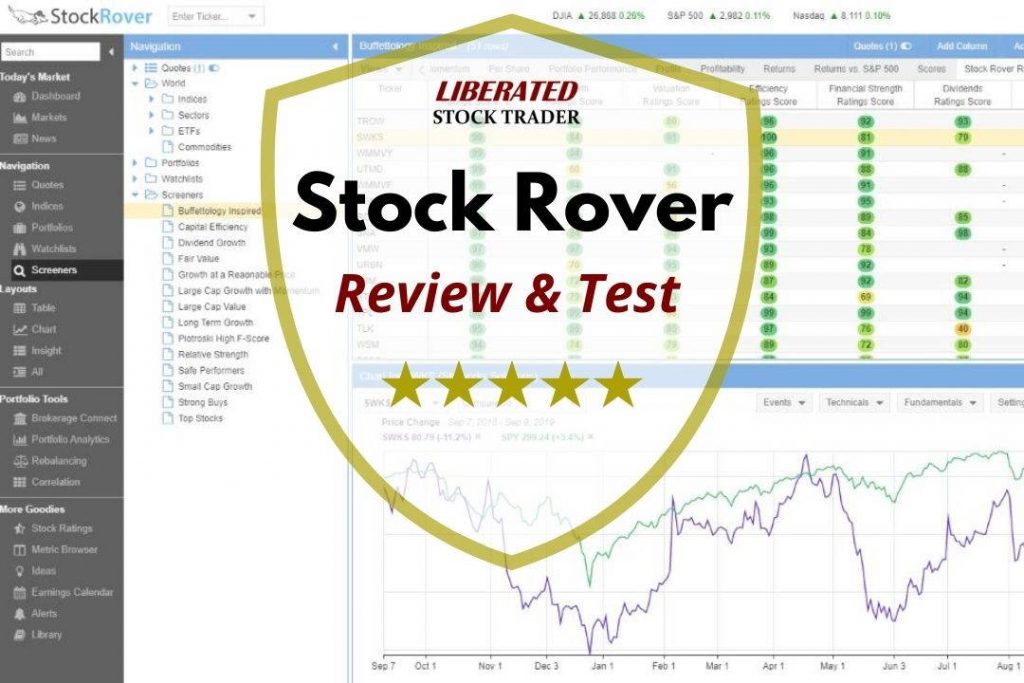
Credit Rating Agency Controversy
The big three rating agencies have long been criticized for inaccuracy, bias, false ratings, flawed methodologies, and conflicts of interest.
Some critics blame the Global Financial Crisis of 2008 on the big three credit agencies, Moody’s, S&P, and Fitch. The theory is that inaccurate credit ratings convinced bankers that derivatives, mortgages, and other securities were safer than they were.
A popular belief is that the rating agencies inflated the ratings of large financial institutions that were their customers. The allegation is that the agencies feared losing the institutions’ business, giving the institutions’ products higher ratings. One popular criticism is that the rating agencies are for-profit companies, not impartial judges.
Recent regulatory actions against rating agencies lend credence to these criticisms. For example, in 2019, the European Securities and Markets Authority fined Fitch’s European subsidiaries for conflicts of interest. In 2018, the China Regulatory Securities Commission banned the Dagong Global Rating Company from assessing bonds because of allegations of fake ratings.
All investors need to keep these criticisms of rating agencies in mind when relying on their data.
Stock Analyst Rating Summary
Analyst ratings have serious limitations investors need to be aware of, however. Some ratings are vague and confusing.
According to our analysis, 61 companies in the S&P500 index saw their stock value drop by more than 10%. However, it is surprising to note that despite this, 95% of analysts remained optimistic and gave either a Strong Buy, Buy, or Hold rating for these stocks. Only 5% of analysts had a Sell or Strong Sell rating. Additionally, it’s worth mentioning that 58% of analysts rated these specific stocks as Strong Buy or Buy.
It is easy for investors to fall into the trap of relying on analysts’ ratings rather than their own research. Stock analysts are human beings who are often wrong.
Investors need to keep the limitations of analyst ratings in mind. Ratings can be vague and confusing. Accusations have been made against some rating agencies, such as Fitch’s European subsidiaries, for conflicts of interest and Dagong Global Rating Company for fake ratings.
Investors should be aware of these criticisms when making stock-picking decisions. Additionally, they should be sure to do their own research into stocks before investing, including reading the financial numbers and researching potential risks associated with the stock.
FAQ
What is the best software for stock analyst ratings?
Stock Rover is the best software for researching analyst ratings with broad upgrade and downgrade reporting. TrendSpider, our recommended AI trading software, enables powerful analyst ratings changes to be mapped on charts.
What are stock analyst ratings?
Stock analyst ratings are evaluations given by financial analysts to predict the future performance of a particular stock. These ratings are often expressed as 'buy,' 'hold,' or 'sell,' providing investors with insights on whether to purchase, retain, or dispose of the stock.
How are stock analyst ratings determined?
Although often wrong, analyst ratings are based on thorough research and analysis. Analysts study company financials, market trends, sector movements, and other economic indicators to forecast a company's future earnings and determine its stock rating.
What does a 'buy' rating mean?
A 'buy' rating suggests that an analyst believes the stock's price will increase. This indicates the stock could potentially provide a higher return on investment, making it an attractive option for investors.
What is a 'hold' rating?
A 'hold' rating implies that an analyst doesn't see a significant upside or downside to owning the stock at its current price. It's essentially a recommendation to maintain your current position.
What does a 'sell' rating signify?
A 'sell' rating means an analyst believes the stock's price will decrease. If you own the stock, the recommendation is to sell it to avoid potential losses.
What is a 'strong buy' or 'strong sell' rating?
These ratings indicate a stronger conviction about the stock's future performance. A 'strong buy' suggests the analyst is very confident about the stock's potential gains, while a 'strong sell' indicates high certainty about potential declines.
Are analyst ratings always accurate?
No, analyst ratings are not infallible. In fact, for falling stocks, analyst ratings are 95% inaccurate. Market conditions can change unexpectedly, affecting the stock's performance contrary to the analyst's predictions.
Should I rely on analyst ratings for my investment decisions?
No, given the 58% inaccuracy of analyst ratings, they shouldn't be the only factor in your investment decisions.
How often are analyst ratings updated?
The frequency of updates depends on the analyst and the company. Some analysts update their ratings quarterly, following a company's earnings report, while others may update more or less frequently.
Where can I find reliable analyst ratings?
Accurate analyst ratings do not exist. In a bull market, analyst ratings are accurate because they are bullish-biased. If a company has financial performance problems, the ratings are 58% to 95% incorrect.
What is a consensus rating?
A consensus rating is the average of all the analyst ratings for a particular stock. It provides a broader view of what the analyst community thinks about the stock's future performance.
What is an upgrade or downgrade in analyst ratings?
An upgrade occurs when an analyst raises their stock rating, indicating improved performance expectations. Conversely, a downgrade means the analyst has lowered their rating due to diminished expectations.
Can analyst ratings affect a stock’s price?
Yes, analyst ratings can influence a stock's price. An upgrade can drive the price up, while a downgrade can lead to a decrease. However, many other factors also impact stock prices.
What is a coverage initiation?
Coverage initiation happens when an analyst starts covering a stock and provides a rating for the first time. This can draw investor attention to the stock.
What is a price target?
A price target is an analyst's prediction of the stock's performance over time. This can be used as a benchmark to compare the stock's actual performance against expectations. Price targets are usually provided with an upgrade or downgrade in ratings.
Related Articles: Finding Great Stocks With Stock Rover
- 12 Legendary Strategies to Beat the Market That [Really] Work
- Our Beat the Market Screener [Actually] Beats the Market
- 4 Easy Steps to Build The Best Buffett Stock Screener
- 6 Steps to Build an Ethical ESG Investment Portfolio
- All Value Investing Strategies & Articles
- Use a CANSLIM Stock Screener Strategy To Beat the Market


